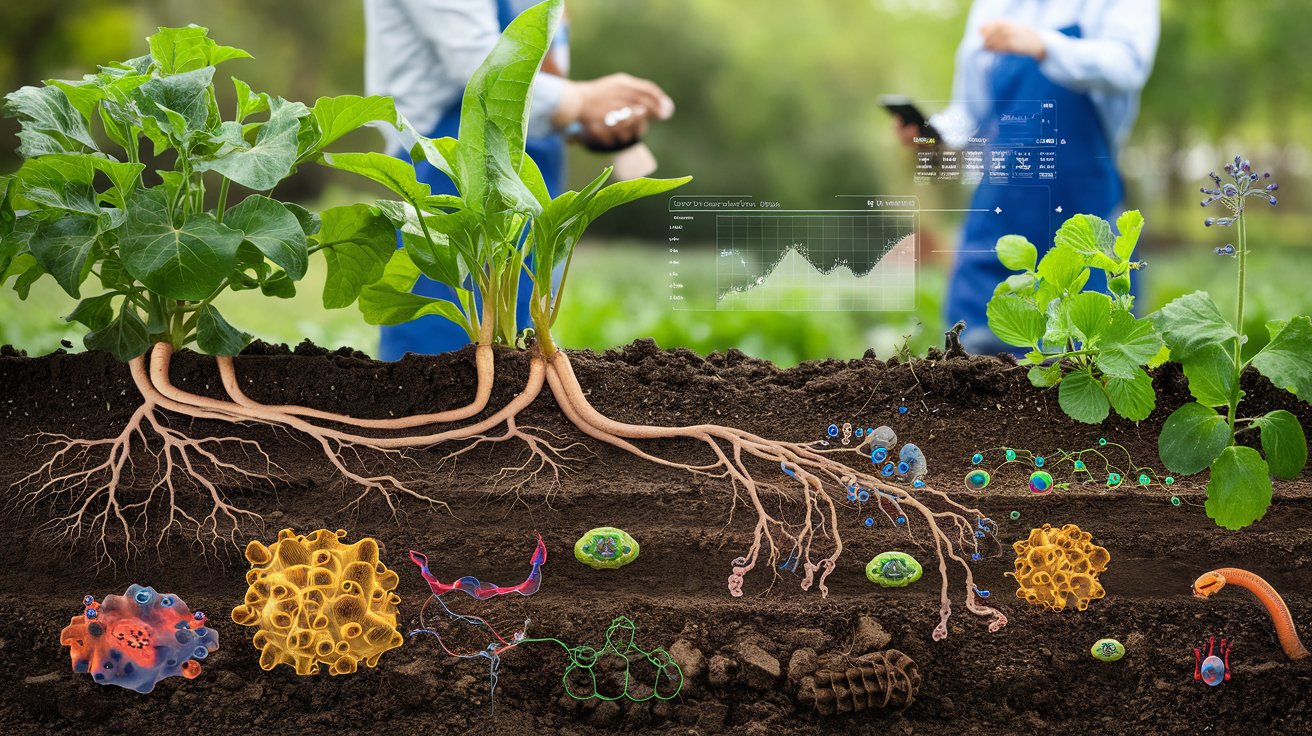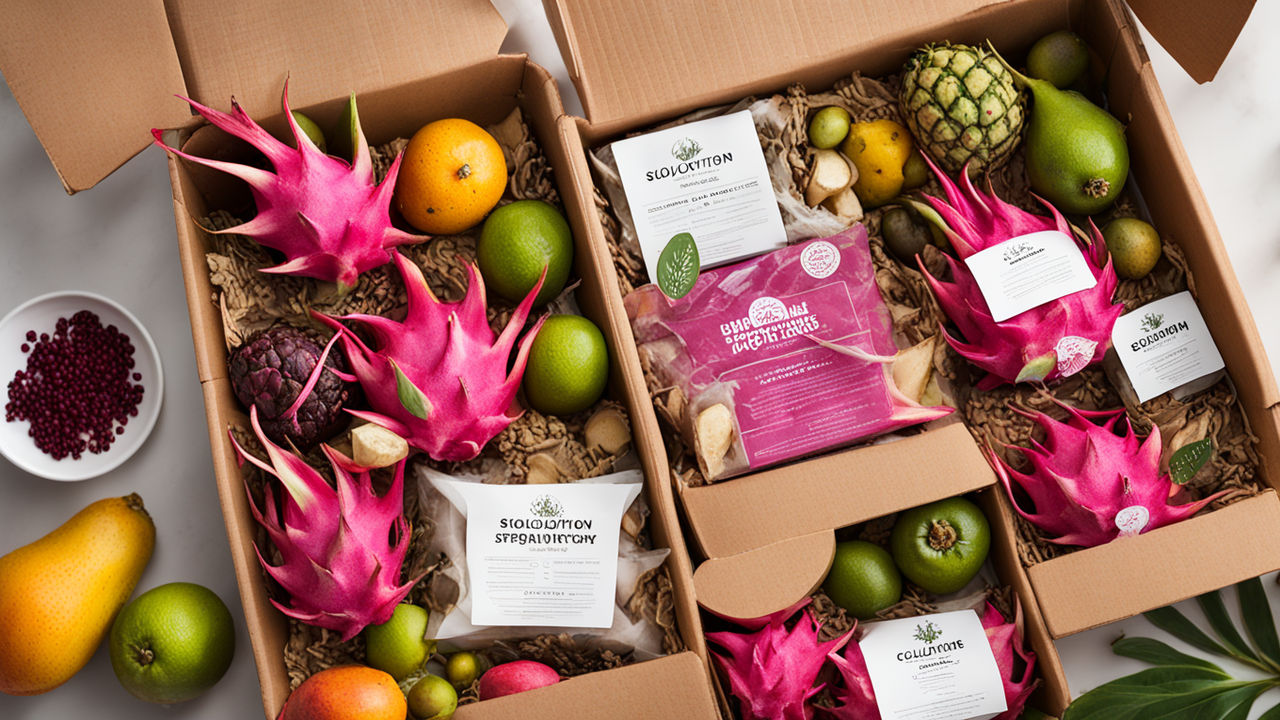Introduction
In today’s world, where sustainable agriculture is essential, the health of our soil is crucial for ensuring food security, ecological balance, and environmental sustainability. Biohacking, the practice of manipulating biological systems to improve their functionality, offers innovative methods to enhance soil health. By utilizing beneficial microbes, fungi, and other biological agents, farmers can improve nutrient uptake, promote biodiversity, and ultimately increase crop yields. This article explores current biohacking techniques for soil health, future possibilities, and emerging trends in the agricultural landscape.
Current Techniques in Soil Biohacking
- Mycorrhizal Fungi
- Overview: Mycorrhizae are symbiotic fungi that form relationships with plant roots, significantly enhancing nutrient absorption, particularly phosphorus. These fungi extend the root system, increasing the surface area for water and nutrient uptake.
- Implementation: Farmers can inoculate their soil with mycorrhizal fungi using commercial products or by cultivating specific plants known to host these fungi (e.g., legumes). This practice has shown to improve crop health and resilience.
- Biofertilizers
- Overview: Biofertilizers contain live microorganisms that promote plant growth by increasing the availability of essential nutrients. Common biofertilizers include nitrogen-fixing bacteria (e.g., Rhizobium) and phosphate-solubilizing bacteria.
- Implementation: Farmers can apply biofertilizers directly to the soil or as a seed treatment. Research indicates that these products can significantly enhance crop yields while reducing the reliance on chemical fertilizers.
- Compost Tea
- Overview: Compost tea is a nutrient-rich liquid made by steeping compost in water. It contains beneficial microorganisms that can improve soil structure and health.
- Implementation: Farmers can brew compost tea and apply it as a foliar spray or soil drench, enhancing nutrient availability and promoting microbial diversity in the soil.
- Biostimulants
- Overview: Biostimulants are natural substances that enhance plant growth and stress tolerance through biological processes. They can include natural compounds like humic acids, seaweed extracts, and beneficial bacteria.
- Implementation: These products can be applied to the soil or plants, helping to improve soil health and increase crop resilience against environmental stressors.
- Soil Microbial Biomarkers
- Overview: Monitoring soil health through microbial biomarkers allows farmers to assess soil quality and biodiversity. Techniques such as DNA sequencing can identify microbial communities and their functions.
- Implementation: Regular soil testing enables farmers to understand microbial diversity, leading to informed decisions regarding amendments and management practices.
Future Possibilities in Soil Biohacking
- Synthetic Biology
- Overview: Advances in synthetic biology may allow scientists to engineer microbes with enhanced capabilities to improve soil health. For example, microbes could be designed to produce specific nutrients or enhance plant growth more efficiently.
- Potential Impact: These engineered microbes could revolutionize soil management, providing targeted solutions for nutrient deficiencies and promoting sustainable farming practices.
- Remote Sensing and AI
- Overview: The integration of remote sensing technologies and artificial intelligence (AI) could provide real-time data on soil health and microbial activity.
- Potential Impact: Farmers could use AI-driven insights to optimize soil amendments and management practices, leading to improved crop yields and resource efficiency.
- Regenerative Agriculture Practices
- Overview: Incorporating biohacking techniques into regenerative agriculture principles, which emphasize soil health, biodiversity, and ecosystem balance, can further enhance farming sustainability.
- Potential Impact: By integrating biohacking strategies, farmers can restore degraded soils and promote long-term sustainability in agriculture.
Emerging Trends in Soil Biohacking
- Increased Focus on Soil Health
- Growing awareness of soil health’s importance is leading more farmers to adopt biohacking techniques to improve soil quality and fertility. This shift is evident in the rise of soil health assessment tools and educational programs.
- Regenerative and Organic Farming
- The demand for organic produce and regenerative practices is driving interest in biohacking methods that reduce chemical inputs and promote soil biodiversity. Farmers increasingly seek natural solutions for enhancing soil health.
- Community-Based Soil Initiatives
- Collaborations between farmers, researchers, and community organizations are fostering knowledge sharing and innovation in soil biohacking. Local initiatives promoting soil health practices are gaining traction, empowering farmers to adopt sustainable methods.
- Policy Support and Research Funding
- Governments and organizations are recognizing the significance of soil health and beginning to support research and initiatives focused on biohacking techniques. This trend could lead to more funding opportunities for innovative soil health projects.
Conclusion
Biohacking offers a transformative approach to enhancing soil health, providing sustainable solutions to agriculture’s pressing challenges. By leveraging beneficial microbes, fungi, and innovative practices, farmers can improve nutrient uptake, promote biodiversity, and increase crop resilience. Looking to the future, the integration of advanced technologies and regenerative practices will play a crucial role in creating a more sustainable agricultural landscape. Embracing these innovative techniques not only benefits individual farmers but also contributes to the overall health of our planet and food systems. By prioritizing soil health through biohacking, we can pave the way for a more resilient and sustainable agricultural future.


